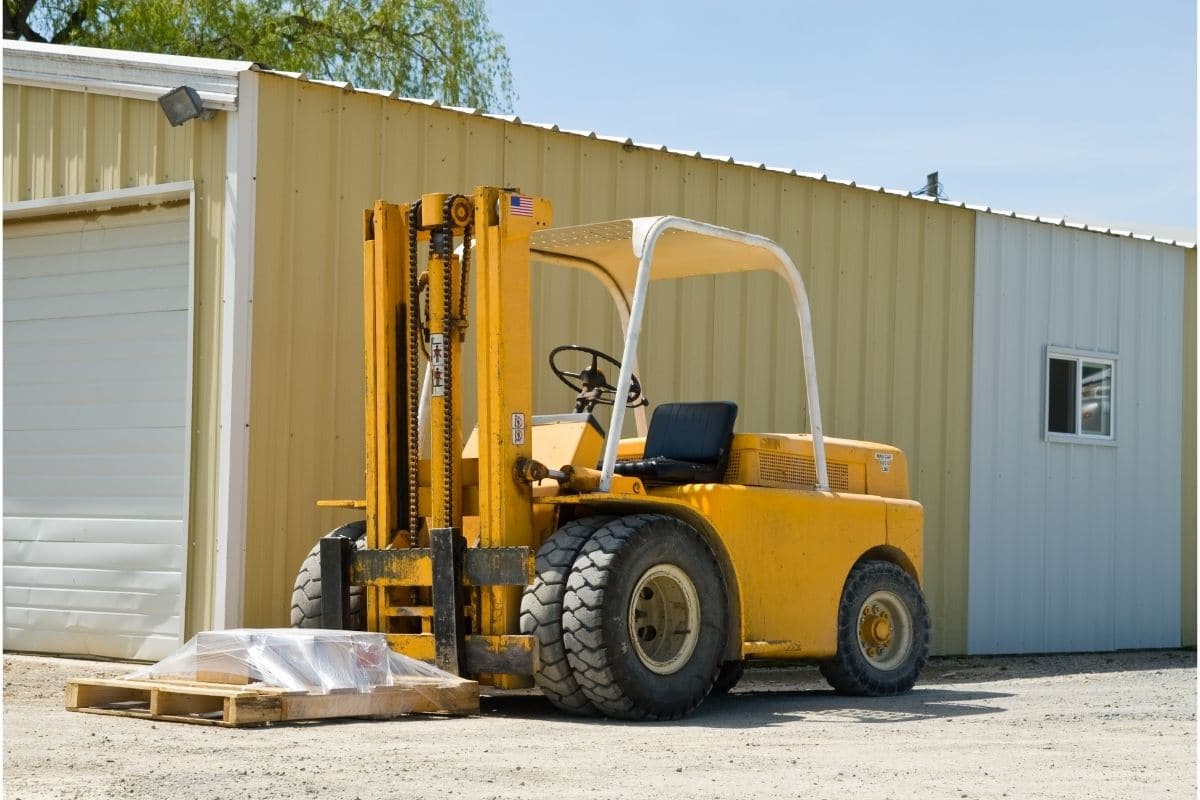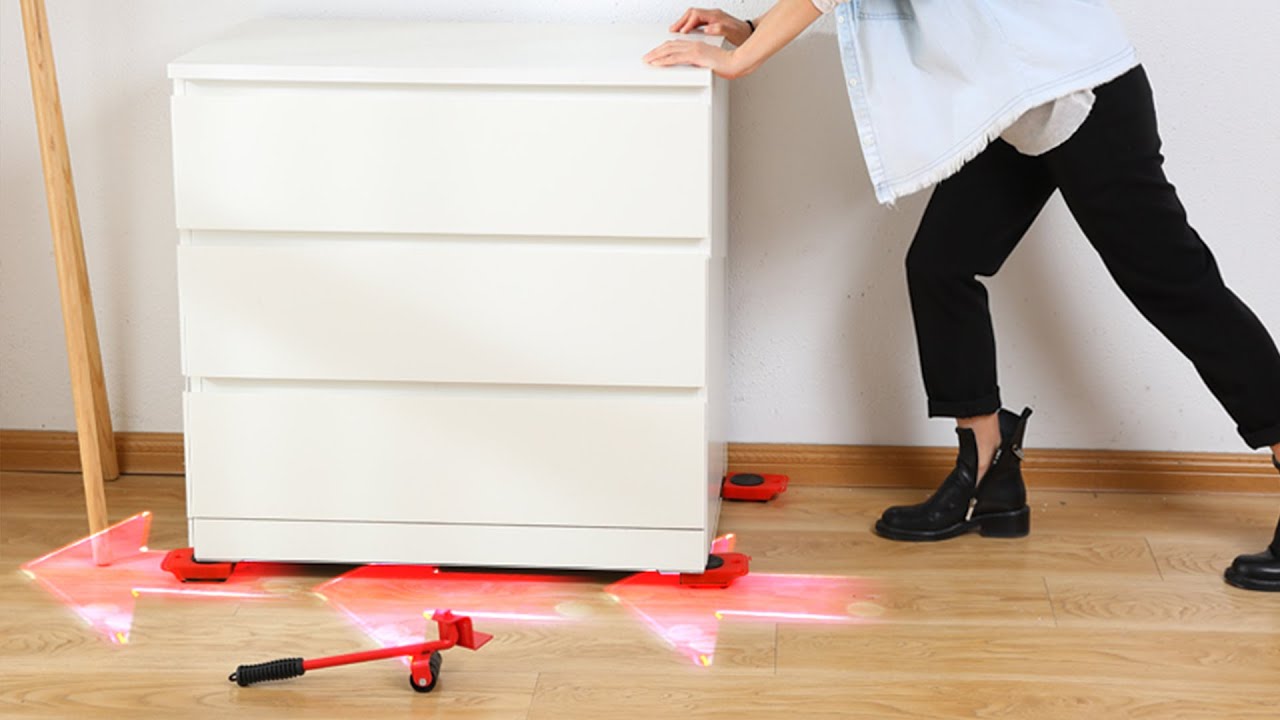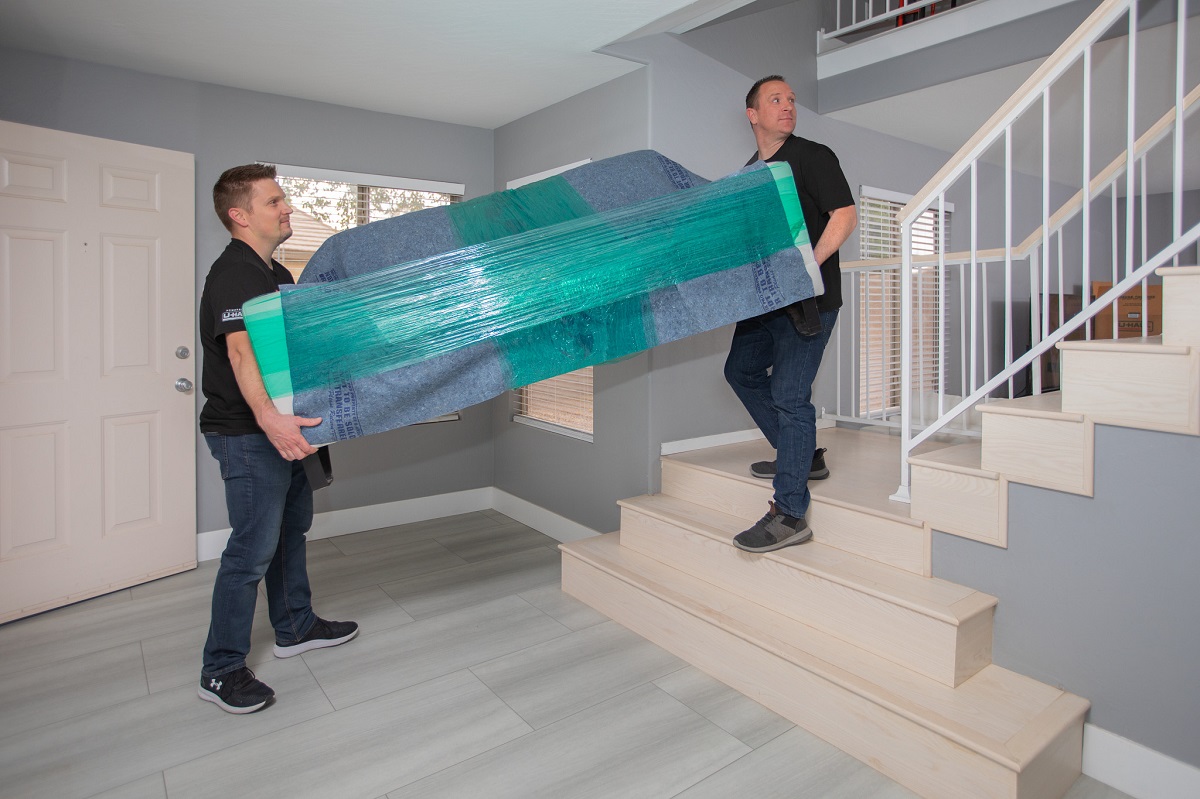

Furniture
How To Move Heavy Dresser Downstairs
Modified: December 7, 2023
Learn the best techniques for safely moving heavy furniture, like a dresser, downstairs. Discover step-by-step instructions and expert tips to avoid accidents and damage to your furniture.
(Many of the links in this article redirect to a specific reviewed product. Your purchase of these products through affiliate links helps to generate commission for Storables.com, at no extra cost. Learn more)
Introduction
Moving a heavy dresser downstairs can be a challenging task, requiring careful planning and proper execution to ensure the safety of both the furniture and the individuals involved. Whether you’re moving to a new home or simply rearranging your current space, it’s important to approach the process systematically to minimize the risk of damage or accidents.
In this article, we will guide you through the steps to safely move a heavy dresser downstairs. From assessing the situation and clearing the path to gathering the necessary tools and enlisting help, we’ll provide you with a comprehensive plan to make the process as smooth as possible.
Remember, moving heavy furniture can be physically demanding, so it’s crucial to prioritize your safety and the safety of those assisting you. Let’s dive into the details of how to tackle this challenging task.
Key Takeaways:
- Safely moving a heavy dresser downstairs requires thorough assessment, proper tools, and enlisting capable help. Clearing the path, padding the dresser, and taking precautions are crucial for a successful and injury-free relocation.
- Disassembling the dresser, planning the route, and reassembling it if needed are key steps in ensuring a smooth and efficient move. Prioritizing safety, communication, and teamwork is essential for a successful relocation.
Read more: How To Move Gun Safe Downstairs
Assessing the Situation
The first step in moving a heavy dresser downstairs is to assess the situation and determine the best approach for the task at hand. Start by examining the layout of the staircase and the dimensions of your dresser. Take note of any narrow doorways, tight corners, or obstacles that may pose challenges during the move.
It’s important to evaluate the weight of the dresser as well. If it’s too heavy for you to handle on your own, it’s highly recommended to seek assistance from others. Moving heavy furniture alone can increase the risk of accidents and injury.
Consider the condition of the dresser as well. If it’s an antique or delicate piece, you may need to take extra precautions to prevent any damage during the move. Assess any structural weaknesses or loose components that may need to be addressed before moving.
Finally, take into account the terrain leading up to the staircase. Are there any uneven surfaces or potential tripping hazards that need to be addressed? It’s important to create a clear and safe path to maneuver the dresser through.
By assessing the situation thoroughly, you’ll have a better understanding of the challenges you may encounter and can plan accordingly to ensure a successful and safe move.
Clearing the Path
Before attempting to move a heavy dresser downstairs, it’s crucial to clear the path to provide a safe and unobstructed route. Start by removing any clutter, such as rugs, shoes, or other small items that may cause you to trip or hinder your movement.
If there are any pieces of furniture or large objects in the way, temporarily relocate or rearrange them to create enough space for the dresser to pass through. It’s essential to have a wide and clear pathway to prevent any accidental bumps or collisions.
Next, take a look at the staircase itself. Remove any obstacles that may impede your progress, such as loose carpeting, protruding nails, or slippery surfaces. If the stairs have a railing, ensure that it is stable and secure.
If necessary, consider using protective coverings on the floors and walls along the path you’ll be taking. This can help prevent scuffs, scratches, or other types of damage to your home’s surfaces.
By clearing the path beforehand, you’ll significantly reduce the chances of accidents or damage occurring during the moving process. It’s a simple step but one that shouldn’t be overlooked.
Gathering the Necessary Tools and Equipment
Successfully moving a heavy dresser downstairs requires the right tools and equipment to make the process easier and safer. Here are some essential items you’ll need to gather:
- Furniture sliders: These handy tools make it easier to glide the dresser along the floor, reducing friction and strain.
- Furniture dolly or hand truck: A dolly or hand truck with straps can provide additional support and stability when maneuvering the dresser.
- Furniture straps or ropes: These will be used to secure the dresser to the dolly or hand truck, keeping it in place during the move.
- Protective blankets or moving pads: These will help cushion and protect the dresser from scratches and dings.
- Packing tape: Use packing tape to secure the protective blankets around the dresser.
- Basic tools: Have a set of basic tools on hand in case you need to disassemble any parts of the dresser.
- Measuring tape: Use a measuring tape to ensure that the dresser will fit through doorways and tight spaces.
- Extra pairs of hands: Enlist the help of friends or family members to assist you in lifting and moving the heavy dresser.
Having the right tools and equipment will not only make the process more efficient but also help prevent damage to the dresser and your home. Take the time to gather everything you’ll need before beginning the move, ensuring a smooth and successful relocation.
Disassembling the Dresser (if applicable)
In some cases, it may be necessary to disassemble the dresser before moving it downstairs. This is particularly true if the dresser is too bulky or if there are tight corners or narrow doorways that it won’t fit through as a whole piece. Here are some steps to follow if you need to disassemble the dresser:
- Remove the drawers: Start by taking out all the drawers from the dresser. Empty them out and set them aside in a safe location.
- Unscrew any detachable parts: If there are any detachable parts, such as mirrors, knobs, or decorative accents, carefully remove them using the appropriate tools. Keep all the hardware and small parts in a labeled bag or container to avoid misplacing them.
- Take apart the main structure: Use a wrench or screwdriver to unscrew any screws or bolts holding the dresser’s main structure together. Follow the manufacturer’s instructions or use your best judgment to dismantle the piece, ensuring you keep track of all the disassembled parts.
- Wrap and protect individual pieces: Once the dresser is taken apart, carefully wrap each piece in protective blankets or moving pads. Secure them with packing tape to prevent any damage during transport.
Disassembling the dresser will make it easier to navigate tight spaces and reduce the overall weight and size of each individual piece. Be sure to keep track of all the hardware and parts for reassembly later on.
It’s worth noting that not all dressers are designed to be easily disassembled. If you’re unsure about disassembling the dresser yourself, it’s best to consult the manufacturer’s instructions or seek assistance from a professional to avoid damaging the piece.
Read more: How To Move A Heavy Vanity
Enlisting Help
Moving a heavy dresser downstairs is not a task that should be attempted alone. The weight and size of the dresser make it challenging, and the risk of injury is high. Enlisting the help of others will not only make the process safer but also more efficient. Here are a few tips for enlisting help:
- Choose reliable and capable individuals: Select individuals who are physically capable of lifting and carrying heavy objects. It’s important to have a team of people who can handle the weight and work together seamlessly.
- Communicate the plan: Before starting the move, gather everyone and discuss the plan of action. Clearly communicate the roles and responsibilities of each person to ensure a coordinated effort.
- Assign a leader: Designate someone to be in charge of directing the move. This person can oversee the process and provide guidance to ensure everything goes smoothly.
- Use proper lifting techniques: Before lifting, remind everyone of proper lifting techniques to avoid strains and injuries. Bend your knees, keep your back straight, and let the legs do the majority of the work.
- Take breaks: Moving a heavy dresser downstairs can be physically demanding. Encourage everyone to take regular breaks to rest and hydrate, especially during longer moves.
Having a team of reliable and capable individuals will not only make the move safer but will also provide extra hands and support to handle the dresser. Don’t hesitate to ask friends, family members, or even consider hiring professional movers if necessary. The more assistance you have, the better.
Remember to show appreciation for the help provided. A simple “thank you” and maybe even offering refreshments or a meal can go a long way in expressing gratitude for their efforts.
Before moving a heavy dresser downstairs, remove all drawers and detach any mirrors or other fragile components. Use furniture sliders or a dolly to ease the process and always have someone to help guide and support the dresser.
Planning the Route
When moving a heavy dresser downstairs, planning the route is vital to ensure a smooth and efficient process. By carefully considering the layout and obstacles in your home, you can create a clear path and minimize risks of damage or injury. Here are some steps to help you plan the route:
- Measurements: Start by measuring the dimensions of the dresser and comparing them to the width of doorways, hallways, and staircases. This will help you determine if any areas may pose challenges or require additional maneuvering.
- Identify obstacles: Take note of any potential obstacles such as furniture, artwork, or light fixtures that may need to be temporarily relocated or protected. Clear a path by moving these items out of the way, ensuring there is ample space to navigate with the dresser.
- Assess staircase conditions: Examine the condition of your staircase, paying attention to the width, steepness, and any irregularities. If there is a handrail, ensure that it is sturdy and secured properly.
- Plan turn angles: Evaluate any tight corners or turns that may need special attention. Measure the angles and use furniture sliders or protective padding to prevent damage to both the dresser and the walls.
- Create a pathway: Determine the best possible route from the current location of the dresser to its destination downstairs. Ensure the pathway is clear of any tripping hazards and that the floor is protected with coverings if necessary.
- Safety considerations: Identify any potential safety hazards such as uneven surfaces, loose carpets, or slippery areas. Address these issues before starting the move to prevent accidents or damage.
By carefully planning the route, you’ll be able to anticipate potential challenges and make necessary adjustments. This will help ensure a smoother and safer move for both the dresser and those assisting with the relocation.
Padding and Protecting the Dresser
One essential step in moving a heavy dresser downstairs is to properly pad and protect the furniture to prevent any damage during the process. By taking precautions and using the right materials, you can safeguard the dresser and ensure that it reaches its new location unharmed. Here are some tips for padding and protecting the dresser:
- Wrap the dresser: Before moving the dresser, wrap it in protective blankets or moving pads. This will help cushion the surface and prevent scratches or dings. Use packing tape to secure the blankets in place.
- Secure the drawers: If the dresser has removable drawers, tape them closed to prevent them from shifting or falling out during the move. This will also help maintain the structural integrity of the dresser.
- Use corner protectors: Corner protectors are specially designed pads or covers that attach to the corners of the dresser. They provide extra protection against bumps and impacts, minimizing the risk of damage to the edges.
- Protect delicate surfaces: If the dresser has any delicate or easily scratched surfaces, such as glass or mirrors, use foam or bubble wrap to provide an additional layer of protection. Secure the wrapping with tape or specialized protective film.
- Stabilize with straps or ropes: Once the dresser is wrapped and protected, use furniture straps or ropes to secure it to a furniture dolly or hand truck. This will prevent any shifting or sliding during the move.
Taking the time to properly pad and protect the dresser will help preserve its appearance and integrity. It’s worth investing a little extra effort to ensure the safety and longevity of your cherished piece of furniture.
Moving the Dresser Downstairs
Now that you have assessed the situation, gathered the necessary tools, enlisted help, and planned the route, it’s time to start moving the heavy dresser downstairs. Follow these steps to ensure a safe and successful move:
- Position the dolly: Position the furniture dolly or hand truck at the base of the staircase, ensuring that it is stable and secure.
- Prepare the team: Gather your team of helpers and communicate the plan one final time. Make sure everyone understands their role and responsibilities during the move.
- Lift and place: Lift the wrapped and protected dresser onto the dolly, positioning it centrally to distribute the weight evenly. Secure the dresser to the dolly using straps or ropes, ensuring it is tightly fastened.
- Start the descent: With one person leading the way and others supporting the sides and rear of the dresser, slowly start moving the dolly down the stairs. Take small and controlled steps, maintaining communication and coordination with your team.
- Watch for obstacles: As you navigate the stairs, be vigilant for any obstacles, tight corners, or potential hazards. Use furniture sliders to help glide the dresser smoothly and protect the stairs from damage.
- Take breaks if needed: If the staircase is long or the move is physically demanding, take periodic breaks to catch your breath and rest. Hydrate and stay hydrated to maintain energy levels.
- Lower the dresser: Once you’ve safely reached the bottom of the stairs, carefully lower the dresser from the dolly to the floor. Ensure a controlled descent to avoid any sudden impacts or jolts.
Moving a heavy dresser downstairs requires teamwork, caution, and patience. Take your time, communicate with your team, and prioritize safety throughout the process.
Remember, if at any point during the move you feel it’s becoming too difficult or risky, don’t hesitate to pause and reassess the situation. It’s always better to err on the side of caution and seek assistance if needed.
Read more: How To Move A Heavy Pergola
Taking Precautions to Avoid Injury
When moving a heavy dresser downstairs, it’s important to prioritize your safety and the safety of those assisting you. Taking the necessary precautions can help prevent injuries and accidents. Here are some important safety measures to keep in mind:
- Use proper lifting techniques: Bend your knees, keep your back straight, and lift with your legs rather than your back. Avoid twisting or jerking motions while carrying the dresser.
- Communicate: Maintain clear communication with your team throughout the move. Use verbal cues or hand signals to coordinate your actions and ensure everyone is on the same page.
- Take breaks: Moving a heavy dresser downstairs can be physically demanding. Listen to your body and take breaks as needed. Overexertion can lead to muscle strains or fatigue, increasing the risk of accidents.
- Use proper footwear: Wear closed-toe shoes with good traction to minimize the risk of slipping or tripping during the move.
- Protect your hands: Consider using work gloves to provide a better grip on the dresser and protect your hands from any sharp edges or protrusions.
- Maintain clear visibility: Make sure your path is well-lit and free from any obstructions that could impede your vision and increase the risk of accidents.
- Take your time: Rushing can lead to mistakes or accidents. Move at a steady pace and avoid cutting corners to ensure a safe and successful move.
- Ask for professional help if needed: If the dresser is too heavy or the move poses significant risks, consider hiring professional movers who have the expertise and equipment to handle the task safely.
Remember, safety should always be the top priority when moving heavy furniture. By taking the necessary precautions and being cautious throughout the process, you can minimize the risk of injuries and ensure a smooth and incident-free move.
Reassembling the Dresser (if applicable)
If you disassembled the dresser before moving it downstairs, the final step is to reassemble it in its new location. Follow these steps to ensure a successful reassembly:
- Refer to the disassembly notes: If you took notes or labeled the disassembled parts during the earlier steps, refer to them now to guide the reassembly process. If not, carefully examine each component to determine how they fit together.
- Start with the main structure: Begin by reassembling the main structure of the dresser. Align the pre-drilled holes and join the pieces together using the appropriate screws or bolts. Tighten them securely, but be careful not to overtighten and damage the wood or hardware.
- Attach drawer glides or rails: If your dresser has drawer glides or rails, reinstall them into the appropriate slots on the dresser frame. Ensure they are aligned and level to ensure smooth and proper functioning of the drawers.
- Reattach any detachable parts: If you removed any mirrors, knobs, or decorative accents, reattach them securely using the appropriate hardware. Double-check that everything is properly aligned and tightened.
- Insert and align the drawers: Slide each drawer back into its respective slot, ensuring they are level and align properly. Test the movement of the drawers to make sure they glide smoothly.
- Inspect the reassembled dresser: Once the dresser is fully reassembled, give it a thorough inspection. Check for any loose or unstable components and tighten them if necessary. Ensure everything is in its proper place and functioning correctly.
Take your time during the reassembly process to ensure everything is done correctly. If you encounter any difficulties or have trouble aligning certain parts, consult the manufacturer’s instructions or seek guidance from a professional if needed.
Once the dresser is fully reassembled and inspected, take a moment to appreciate your accomplishment. Your dresser is now ready to be enjoyed in its new location!
Conclusion
Moving a heavy dresser downstairs can be a daunting task, but with careful planning, the right tools, and a team of helpers, it can be accomplished safely and efficiently. By following the steps outlined in this guide, you can successfully navigate the challenges and ensure the smooth relocation of your dresser.
Assessing the situation, clearing the path, and gathering the necessary tools are critical steps that set the foundation for a successful move. Disassembling the dresser, if applicable, allows for easier navigation through tight spaces. Enlisting the help of capable individuals and planning the route ensures a coordinated effort and minimizes risks. Padding and protecting the dresser safeguards it from damage during the move.
Moving the dresser downstairs requires caution, proper lifting techniques, and clear communication among the team. Taking precautions to avoid injuries, such as taking breaks when needed and using proper footwear, is essential. If you had to disassemble the dresser, reassembling it with care and attention to detail will complete the process.
Remember, safety should always be the top priority. If at any point you feel unsure or overwhelmed, don’t hesitate to seek professional help. Moving heavy furniture can be physically demanding, so it’s important to listen to your body and take breaks as needed.
By following these guidelines and approaching the task with patience and consideration, you can successfully move your heavy dresser downstairs and enjoy it in its new location for years to come. Good luck with your move!
Frequently Asked Questions about How To Move Heavy Dresser Downstairs
Was this page helpful?
At Storables.com, we guarantee accurate and reliable information. Our content, validated by Expert Board Contributors, is crafted following stringent Editorial Policies. We're committed to providing you with well-researched, expert-backed insights for all your informational needs.














0 thoughts on “How To Move Heavy Dresser Downstairs”